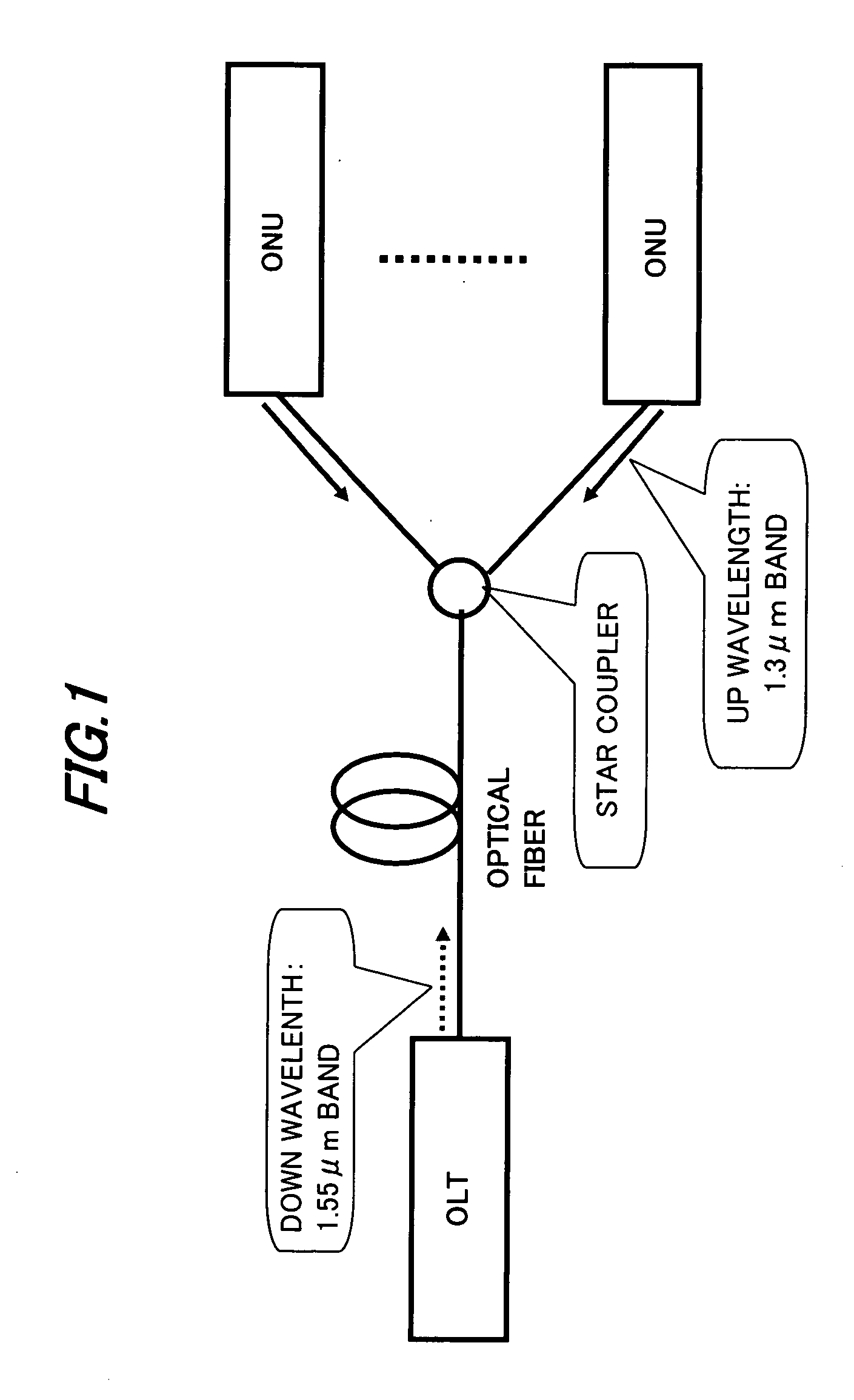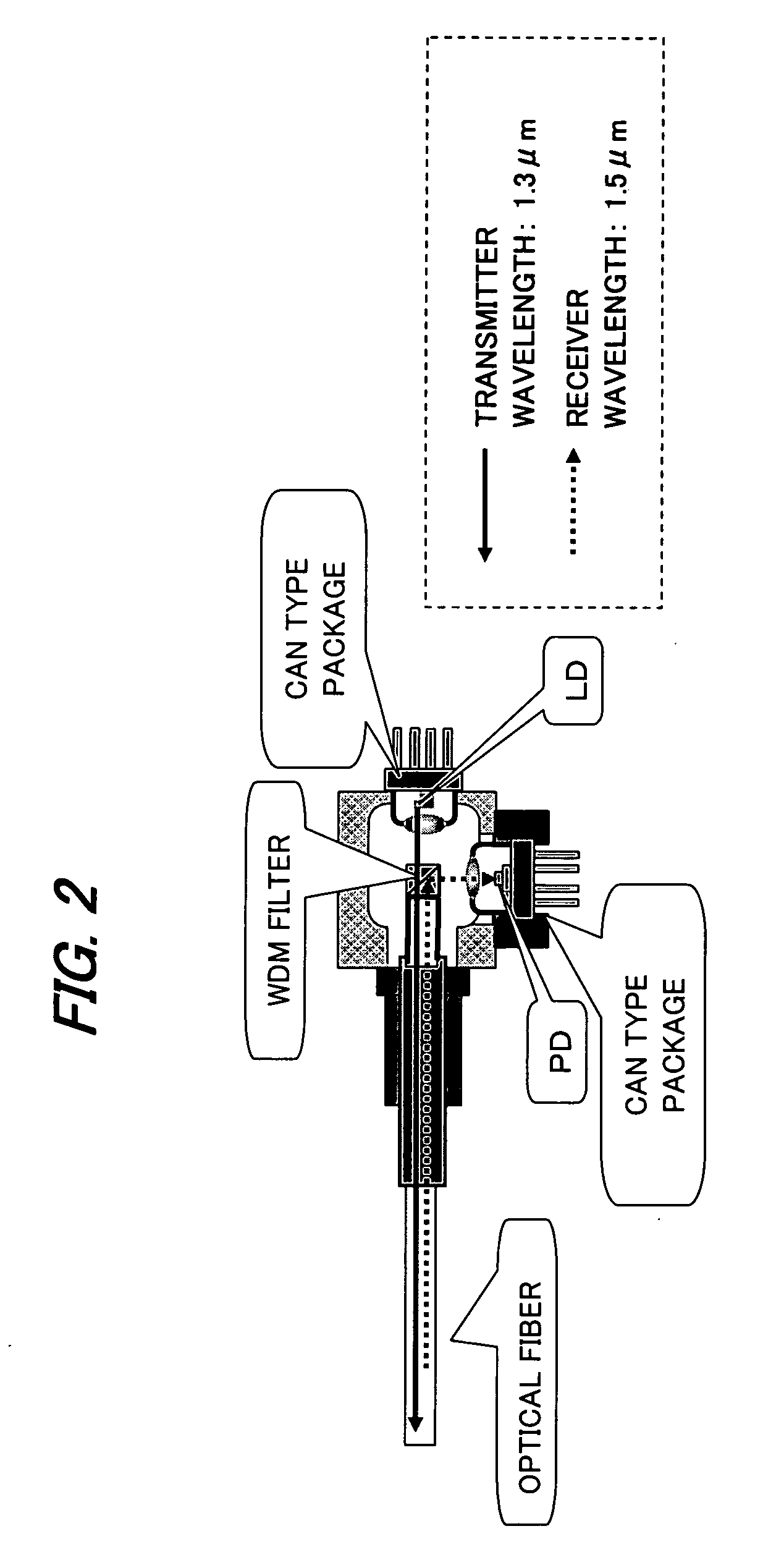Polarization independent optical isolator and optical transmitting/receiving apparatus
- Summary
- Abstract
- Description
- Claims
- Application Information
AI Technical Summary
Benefits of technology
Problems solved by technology
Method used
Image
Examples
first embodiment
[0049]FIG. 8 is a diagram showing a structural example of an optical device (optical transmitting / receiving apparatus) according to a first embodiment of the present invention. Referring to FIG. 8, the optical transmitting / receiving apparatus includes an optical fiber F as an optical transmission path, a CAN type package (hereinafter referred to as “LD package”) 10 (corresponding to a second CAN type package) which receives an LD as a light emitting element (light source), a CAN type package (hereinafter referred to as “PD package”) 20 (corresponding to a second CAN type package) which receives a PD as a light receiving element, and a polarization independent optical isolator 30 (hereinafter referred to as “optical isolator 30”).
[0050]The optical isolator 30 includes a first birefringent plate 1 (hereinafter referred as “birefringent plate 1”), a Faraday element (Faraday rotator) 2, a λ / 2 plate (½ wavelength plate) 3, a polarization beam splitter 6 (corresponding to a polarization e...
second embodiment
[0062]FIG. 9 is a diagram showing a structural example of an optical transmitting / receiving apparatus according to a second embodiment of the present invention. In the optical transmitting / receiving apparatus shown in FIG. 8, the LD module 10 is disposed at the upper side of the optical isolator 30, whereas in the optical transmitting / receiving apparatus shown in FIG. 9, the LD module 10 is disposed at the lower side of the optical isolator 30. With this structure, the input direction of the transmitter light with respect to the polarization beam splitter 6 is different from that in the first embodiment. Except for the above-mentioned matters, the structure and operation of the optical transmitting / receiving apparatus (optical transmitter and receiver) according to the second embodiment are identical with those in the first embodiment, and therefore their description will be omitted.
third embodiment
[0063]FIG. 10 is a diagram showing a structural example of an optical transmitting / receiving apparatus according to a third embodiment of the present invention. FIG. 10 shows an example in which the LD package 10, the PD package 20, the optical isolator 30, and the optical fiber F which constitute the optical transmitting / receiving apparatus described in the first embodiment are structured integrally.
[0064]Referring to FIG. 10, the optical transmitting / receiving apparatus has a hollow boxy housing 40. The housing 40 includes opening portions 41 and 42 into which a CAN portion 11 of the LD package 10 and a CAN portion 21 of the PD package 20 are to be inserted, and the respective CAN portions 11 and 21 are inserted into the opening portions 41 and 42, respectively, and flange portions 12 and 22 of the respective packages 10 and 20 are abutted against the outer surface of the housing 40. The respective packages 10 and 20 are fixed to the housing 40 at the abutment portion. For example...
PUM
 Login to View More
Login to View More Abstract
Description
Claims
Application Information
 Login to View More
Login to View More - R&D
- Intellectual Property
- Life Sciences
- Materials
- Tech Scout
- Unparalleled Data Quality
- Higher Quality Content
- 60% Fewer Hallucinations
Browse by: Latest US Patents, China's latest patents, Technical Efficacy Thesaurus, Application Domain, Technology Topic, Popular Technical Reports.
© 2025 PatSnap. All rights reserved.Legal|Privacy policy|Modern Slavery Act Transparency Statement|Sitemap|About US| Contact US: help@patsnap.com



